
A drinks menu sits erect on the counter boasting of “Teetotal G ’n’ T”, “Square Root Soda”, and “Seedlip & tonic”. I do not know what any of these are but Seedlip certainly sounds like you swallowed something memorable.
“The G ’n’ T is made in Skipton!” bellows a voice nearby with the enthusiasm of someone who deems this a selling point. It belongs to Laura Willoughby, the cofounder of London’s first alcohol-free bar for LGBT people.
The “bar” is a monthly night housed in a two-storey, wood-panelled café in Bloomsbury that should probably win an award for its name: Queers Without Beers.
They trialled Queers Without Beers in east London first before finding the permanent central London spot here. Baked goods nestle in bowls. William Morris wallpaper and a whiff of veganism abound.
It is just 10 minutes after the opening, on an arctic Wednesday in January, yet dozens of people are already draped around tables on the ground floor, or gathered downstairs by a fireplace, apparently unencumbered by the prospect of an entire night out sober.
I stare at the pastries.
There is no music, and obviously no alcohol, but instead a rising din of chatter, as if conversations are lighting up by sheer determination to connect. It feels wildly, sweetly enthusiastic, like a freshers’ week event but without the certainty of regrettable sex.
Willoughby has an impressive quiff and the perky, rolled-up-sleeves demeanour of someone who would have been a godsend in a bomb shelter, and calls herself a “bit of a twat”. This pertains to her previous drinking problem.
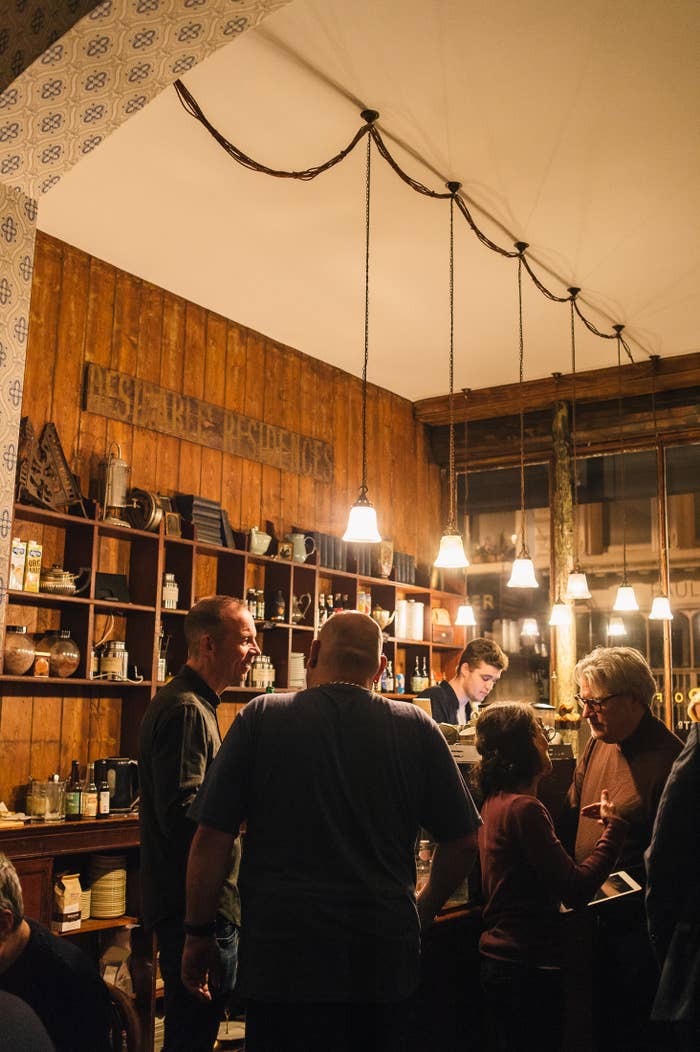
There is, she says, “no definition of alcoholism” – which is exactly what someone might slur during an intervention – and instead describes two categories of boozers: “dependent drinkers” and “everyone else who’s a bit of a twat”. She was one of those people, she says, and thus the nights her low- and no-alcohol organisation Club Soda runs – both here and across country – are aimed particularly at this group.
There is a huge potential market among the queer community. LGBT people drink too much – even more than the rest of the British population. Every survey of the comparative drinking habits of straight and rainbow folk brings the same news: By any measure, we have a problem.
Gay men and women are, for example, about twice as likely to binge drink at least once a week, compared with the general population; around 16% of LGBT people drink at levels suggestive of dependency (compared with just 3.8%); and, according to one study, 47% of trans people drink at harmful levels.
The statistics, however, miss the backstory: of the early isolation many LGBT people feel, growing up in a closet not of anyone’s making, but out of which everyone has to escape – or perish; of jumping from the closet into the LGBT scene, populated by others also seeking escape; and of the low self-regard that so often lingers. Disinhibit, anaesthetise. Alcohol finds us.
As Monty Moncrieff, CEO of London Friend, the LGBT health charity supporting Queers Without Beers, explains: “Often the first places we go when we’re coming out is the local gay bar, and it means that alcohol and potentially other drugs are there while we’re forming our identities – that’s where people go to associate with other people and explore who they are. Alcohol is used as a coping mechanism, to self-medicate for some of the issues we face: discrimination, worse mental health.”
But in 2018, with what some might consider to be less discrimination and with alternatives to bars in online groups and dating apps, the culture of queer boozing would, you might expect, be declining. According to Moncrieff, the evidence shows no such abatement.
Meanwhile, services specifically aimed at LGBT people with alcohol and drug problems – such as Antidote in central London – are sparse and overwhelmed by demand.
“Alcohol is used as a coping mechanism, to self-medicate for some of the issues we face”
I ask a young man called Henry, sat downstairs, why he is here. “I think it’s really important to have a space where there’s no expectation of getting drunk or where you might be more uninhibited than you want to be,” he says.
But it's about more than simply avoiding a hangover. “It’s an opportunity for people to open up a bit more in a different way, not in a sexual or disinhibited way – you’re opening up to talk about things that actually interest you, which I don’t think would happen in a noisy bar where you’re drinking.”
There is another reason for Henry’s aversion to licensed premises: He works as a doctor in the A&E department of a London hospital. He treats alcohol’s casualties every day. Drugs’, too. “Chemsex and the scene that comes with it – we see people who are critically ill; the real sticky end of the club drug scene, alcohol addiction problems, I’ve seen it all.”
It echoes something Moncrieff said earlier: Many of the people who seek help for drug problems at Antidote think nothing of their drinking, so normalised is it, that only when the service ascertains how much and how often they drink does the reality emerge: It’s not just the GHB for which they need help, but the G ’n’ T.
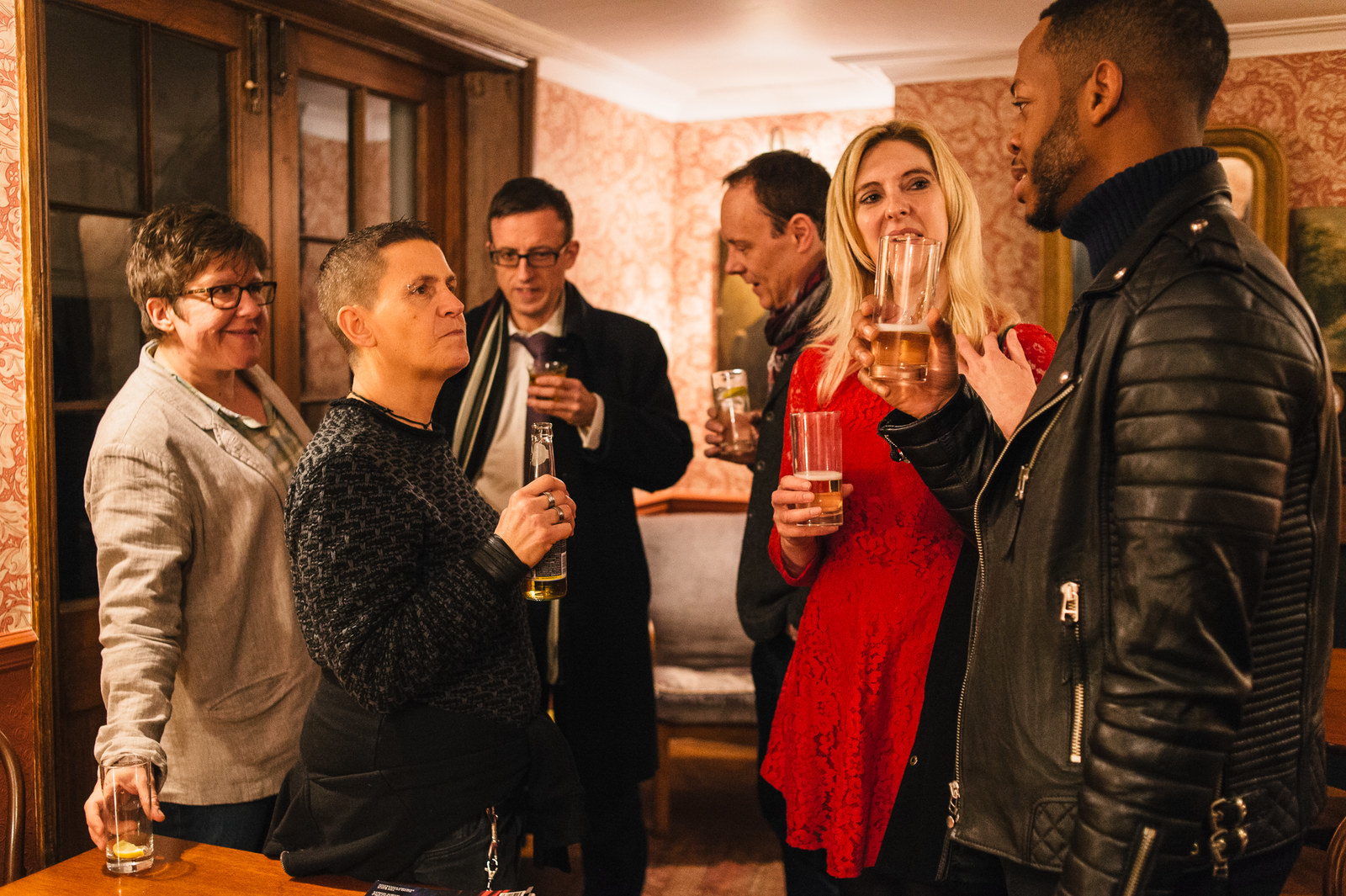
For Henry, having also lived in Exeter, the lack of options available to LGBT people for soberly connecting is even more evident in smaller towns outside of London. Queers Without Beers, therefore, provides an alternative to the conventional notion of what the scene is, he says, and such possibilities are just the start. “I think it’s only going to get bigger,” he says, adding that he also attends the London Gay Men’s Chorus with the man sitting next to him, Edo.
Like Henry, Edo is concerned by the bar and chemsex scene. At chill-out parties now, he says, “the sex is happening in parallel to the social gathering and often these people have no problem seeing their best buddies getting fucked.” There is little chance of hooking up here, however, he says. “It’s too mixed and silent – no music.”
Except, as we talk, I spot something: A young woman has approached BuzzFeed News’ (female) photographer, who afterwards confirms that this was at least an attempt at a hookup.
Edo is right about it being mixed, though: The ages of customers span twenties to sixties, with an almost equal balance of men and women – almost unheard of on the LGBT scene – alongside trans and nonbinary people. And while not entirely racially diverse, it is at least more so than in many bars.
Quincy – tall, smiley, and in his twenties – is standing six feet away from Henry and Edo, and has just emigrated from Bermuda. After three weeks in London he decided to come here because “Everywhere I go, people are like, ‘Drinks! Drinks! Drinks!’ and when you don’t drink much people think you’re weird.”
Behind him, AJ – crop-haired, pierced, middle-aged – stands with her new girlfriend, Naomi. AJ talks about San Francisco in the 1990s, where she lived, and where alcoholism was rife, prompting multiple queer coffee bars to open, something she foresees happening here. It all comes in cycles, she says. There’s another reason: “Everything is so expensive now if you want to go out for a drink, and not so many people can actually afford it.”
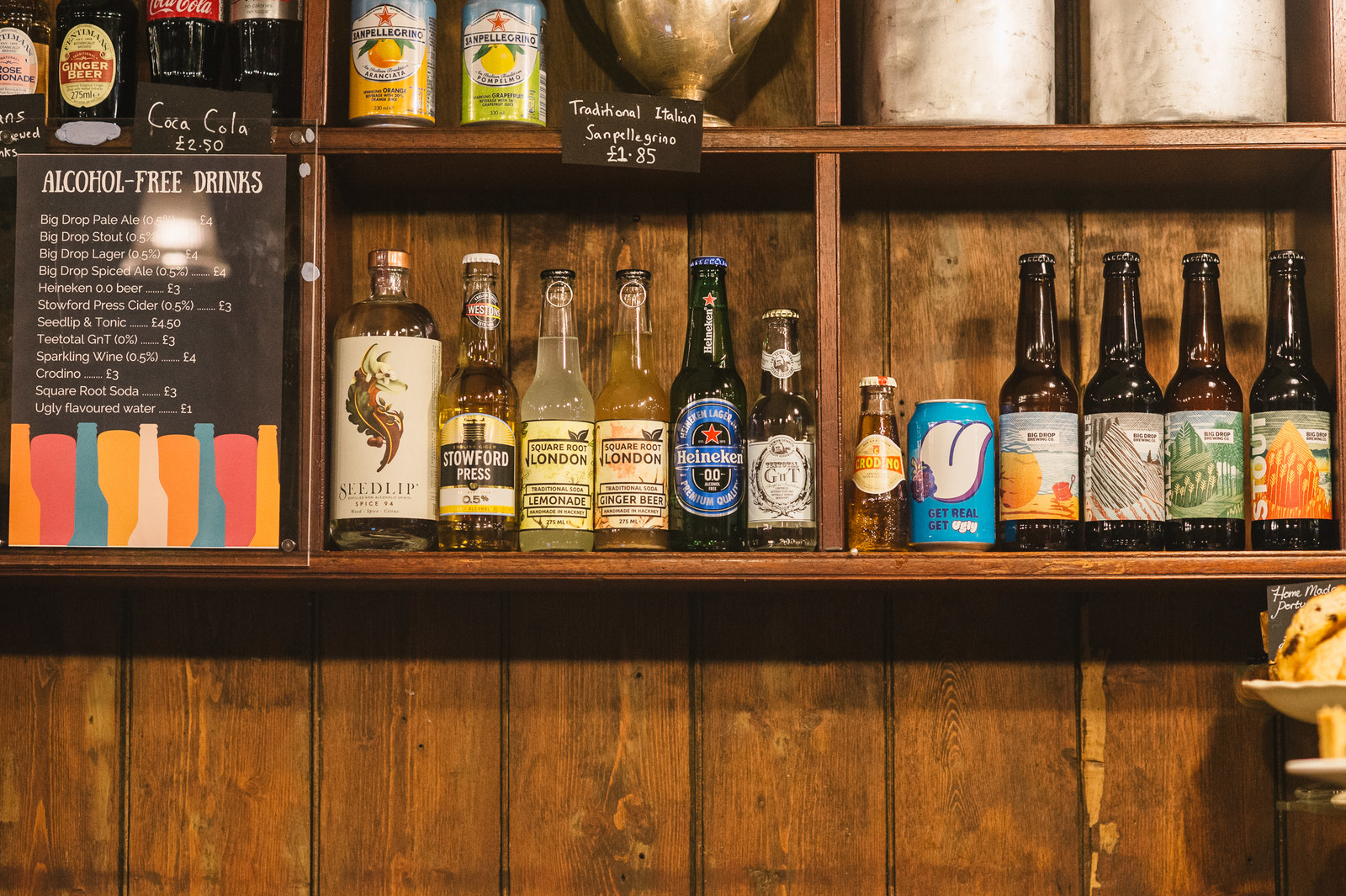
Naomi begins to talk about her work at an alcohol recovery service in north London. “It’s about helping people who’ve quit to rebuild, to refocus, and that can be as simple as finding ways to have fun that don’t involve alcohol.” She glances around the room at everyone chatting happily, softies in hand.
“I’m in recovery myself,” she says suddenly, “and what I found when I went into alcohol services in Tottenham was I didn’t automatically feel comfortable to talk about myself as a lesbian in the group. In fact, there were three out of 12 people who were lesbians and we didn’t even know until we’d been there for a month and a half because nobody talked about their same-sex partners or the fact that part of why they’d started drinking was because they had been dealing with homophobia.”
“Part of recovery is about figuring out why this thing had become the problem”
She also mourns the closure of London’s oldest, beloved LGBT café, First Out, which for decades provided a haven away from Soho’s chemically enhanced intensity. “It was a massive community asset and nothing has replaced it,” she says.
“We’ve lost 70% of our nightlife,” adds AJ, referring to the dozens of LGBT venues that have shut this decade. Now, she says, she is one of a group of people planning a new LGBT community centre, partly to provide a dry venue. “The whole idea is to create a space where all people can socialise; it doesn’t have to be about alcohol.”
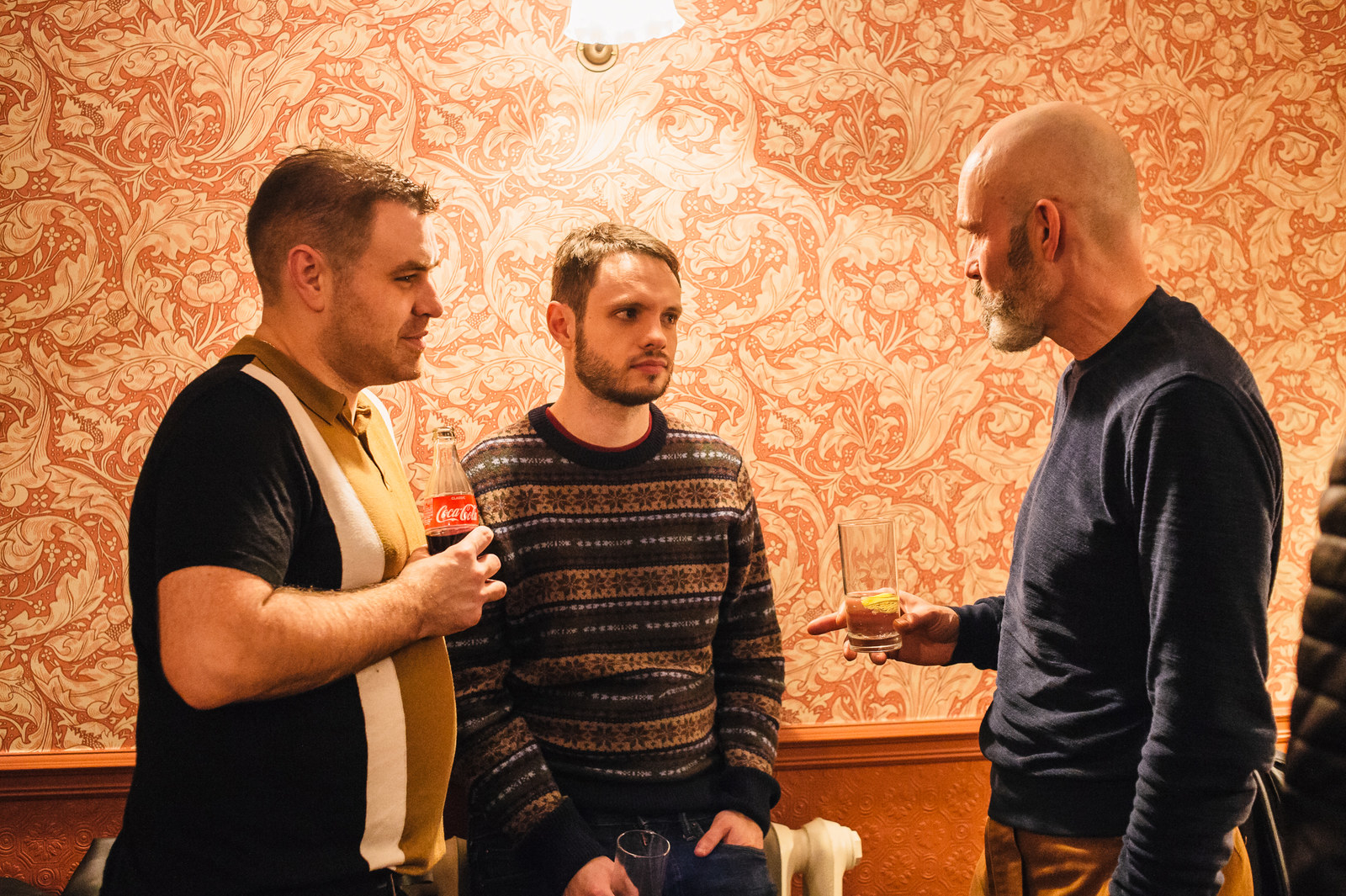
Quincy joins the group, too, and the conversation turns variously to how young lesbians often identify differently to previous generations, how the butch/femme divide has broken down, and how during the AIDS crisis gay men began to adopt ever more hypermasculine imagery. As we discuss our identities and history it feels suddenly poignant: How often do we talk about who we are, or what it means to be queer, in a bar where people drink?
“The conversations we have here are not the same conversations that happen in a drunk state”
I head upstairs and barge in on a large table, seated at which are two friends: Kiku, a trans woman from Yorkshire wearing a hijab, and Moosa, from Oman. Kiku has the still, composed air of someone who observes people closely.
“It feels inclusive,” she says, gazing over at the patrons in front, adding that it’s annoying how much of the LGBT scene revolves around alcohol, the drinking of which is widely discouraged in Islam. “There’s a disconnect between LGBT groups. In Soho, if you have the same perspective as those people then you’re part of that group, but if you’re different, you’re ‘other’.”
By contrast, says Kiku, “I go to many other Muslim places that accept LGBT people.” But the media, she says, tells only one story about LGBT Muslims. “I don’t think every story has to be negative. There are plenty of Muslims with positive stories – you just have to open up to other cultures.”
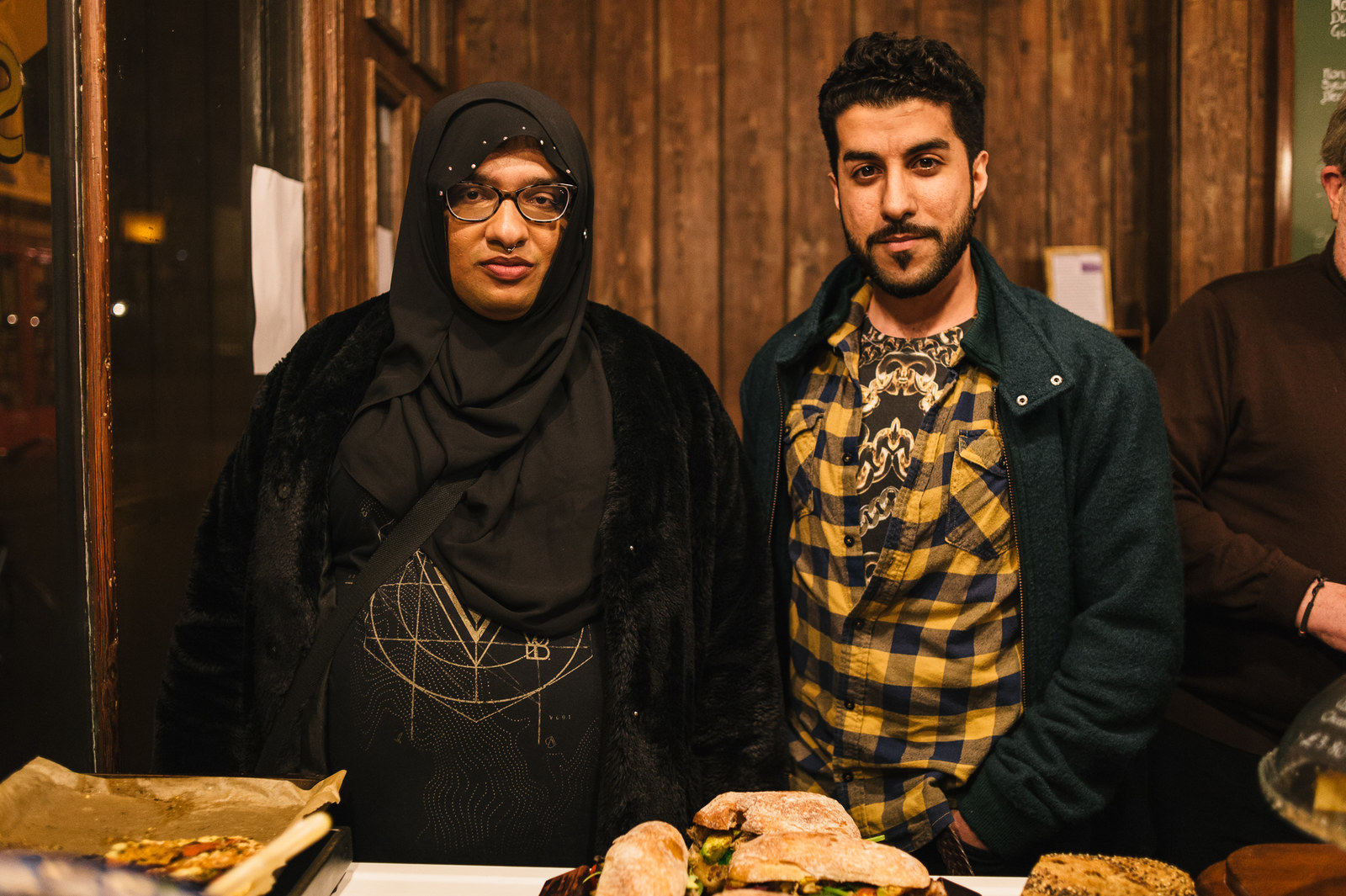
Moosa picks up this point, saying how much inclusion and representation drew him here.
“For me it’s important to be present in events like these, not only to make Oman present but also to establish that if we [LGBT people] in Oman are not able to be visible in our own communities then we can still be visible outside [Oman],” he says.
Moosa says although he does drink alcohol there is something unique here: the interplay between “the non-drinking culture and queer culture. There’s a different vibe. Many people here don’t drink and to have them comfortable makes me feel more comfortable. The conversations we have here are not the same conversations that happen in a drunk state.”
It is, he says, more intimate. “And if you don’t have that then you’re missing something.”
Laura Willoughby returns to this issue. “One of the most beautiful things in life is making connections with other people, and I’m so sad I did it through the prism of being absolutely wankered all the time.”
“I didn't have anyone to go home to of an evening. My drinking escalated”
Why did she drink so much? Willoughby begins by talking about our booze-soaked culture, and the cheap wine flowing freely in her previous life in politics, before finally invoking the personal. “I’m my father’s daughter,” she says. “I inherited his drinking habits,” and in a flicker, she adds, “And his boobs.”
As if aware that humour is as much an anti-intimacy device as drinking, she returns to the question.
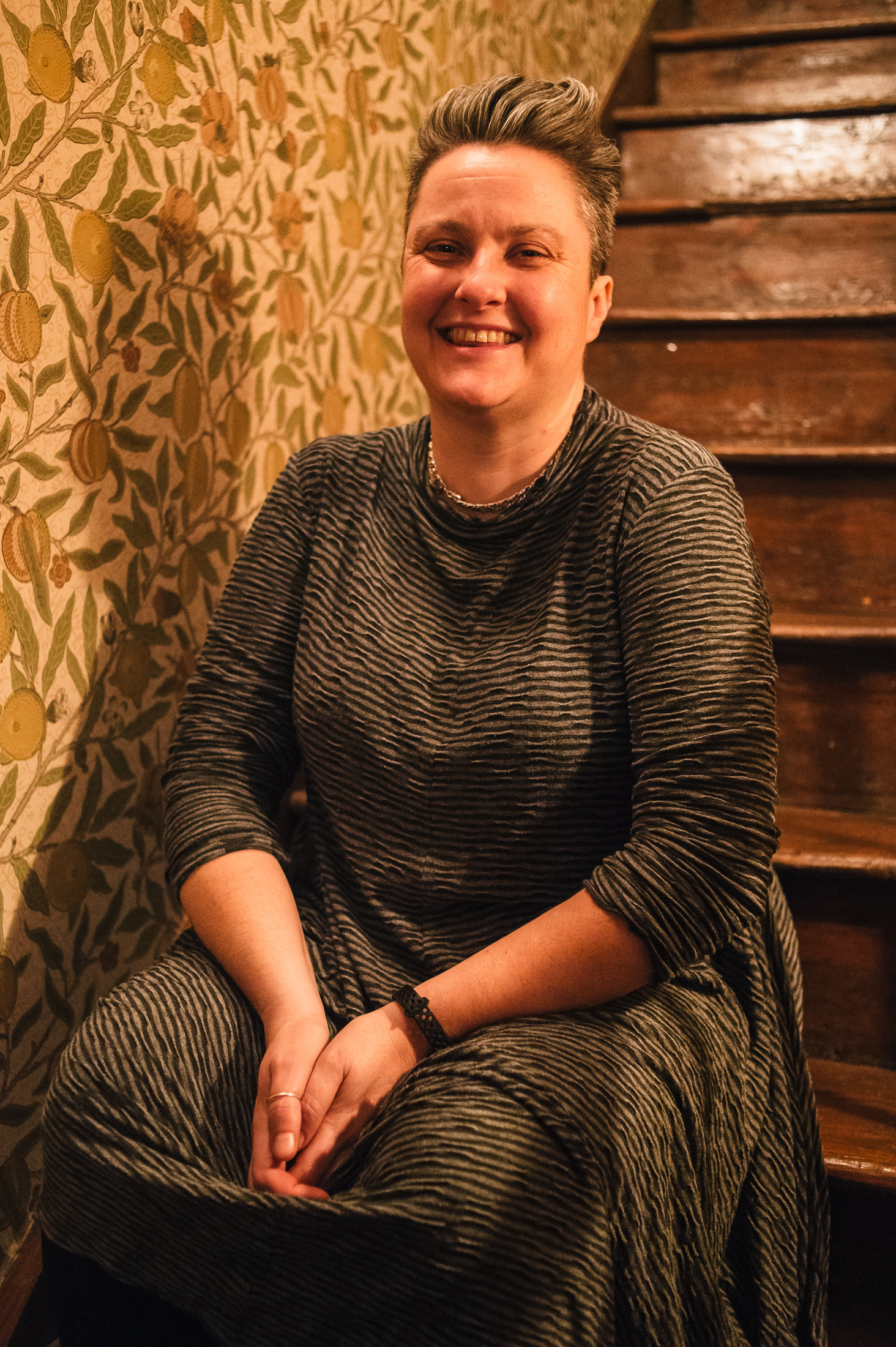
“I didn’t have anyone to go home to of an evening. I didn’t have any family responsibilities, so I could carry on living a life that I lived in my twenties, and I ended up in a job that made me very unhappy. My drinking escalated and I realised I had to knock it on the head if I wanted to be the person that I was.”
She is hopeful about LGBT people and drinking, despite everything. “We’re taught in Britain to use alcohol when we’re happy, when we’re sad, stressed, anxious. It’s hard to go against that social norm but the queer community is good at accepting when someone says they don’t drink any more, because we’re used to acting outside of social norms.”
Willoughby is excited by how popular the evening has been, how diverse the crowd was, and how this is just the start. “There’s a lot to be gained from changing your relationship with alcohol,” she says, and as I say goodbye to her a face flashes into my mind: a friend who should have been here.
He grew up in the northeast of England, Mauritian-British, outrageously handsome. He loved a drink at university – always with a pint in his hand. He was never comfortable in himself, never OK being gay. Not unusual, really, certainly not in the 1990s when I knew him. Five years ago I received a message on Facebook telling me he had died. Only 37. He had drunk himself to death.
I wonder what he would have made of Queers Without Beers, of the mix of people, the funny drinks and truth-telling, the intimacy offered in place of ethanol.
As I leave I overhear two conversations: a man and a woman in late middle age discussing with great enthusiasm the French Revolution; two twentysomething lesbian friends discussing one of their relationships. Spirits of an altogether different kind, swirling all around.
I wish he could have seen this.
